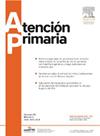[晚期慢性病患者的镇痛治疗和疼痛管理。改进的机会]。
IF 1.8
4区 医学
Q2 MEDICINE, GENERAL & INTERNAL
引用次数: 0
摘要
目的描述晚期慢性病(ACD)患者的镇痛治疗,确定疼痛管理,并发现改进的机会:观察性、描述性、横断面、多中心研究:地点:加泰罗尼亚地区的三个初级护理团队、一家中级护理医院和五家疗养院:主要测量指标:主要测量指标:护理地点(家庭、疗养院、医院)、生命末期(EOL)轨迹(器官衰竭、癌症、痴呆症、多病症)、镇痛治疗类型以及根据疼痛管理指数量表进行的疼痛管理:研究共纳入 183 名患者。最常见的临终前症状是痴呆,其次是器官衰竭、多病症和癌症。最常用的镇痛药是扑热息痛,而弱阿片类药物是推荐药物。镇痛药的使用因临终轨迹和护理地点的不同而不同,癌症患者和住院患者使用强阿片类药物的情况分别占多数。近一半的患者的PMI为阴性,没有记录任何非药物镇痛干预:尽管疼痛在所有临终关怀轨迹和护理场所都非常普遍,但在有ACD和姑息治疗需求的患者中,强阿片类药物的使用仍然主要集中在医院环境和肿瘤疾病中。高比例的阴性 PMI 显示,为更好地控制疼痛,有机会采用个体化镇痛阶梯疗法。此外,采用非药物治疗方法也有助于改善这些患者的疼痛状况。本文章由计算机程序翻译,如有差异,请以英文原文为准。
Tratamiento analgésico y adecuación terapéutica en los pacientes con enfermedad crónica avanzada. Oportunidades de mejora
Objectives
To describe the analgesic treatment of patients with advanced chronic disease (ACD), to determine pain management, and to detect opportunities for improvement.
Design
Observational, descriptive, cross-sectional, multicentre study.
Location
Three primary care teams, one intermediate care hospital and five nursing homes in Catalonia.
Participants
Patients with ACD and pain according to the Brief Pain Inventory (Short Form) scale (or Pain Assessment in Advanced Dementia scale, in case of advanced dementia).
Main measurements
Place of care (home, nursing home, hospital), end of life (EOL) trajectory (organ failure, cancer, dementia, multimorbidity), type of analgesic treatment and pain management according to the Pain Management Index scale.
Results
The study included 183 patients. The most frequent EOL trajectory was dementia, followed by organ failure, multimorbidity and cancer. The most commonly used analgesic was paracetamol, while weak opioids were testimonial. Analgesic use differed according to EOL trajectory and place of care, with the use of strong opioids prevailing in cancer and hospital, respectively. Almost half of patients had negative PMI, and none non-pharmacological intervention for pain control was recorded.
Conclusions
In patients with ACD and palliative needs, the use of strong opioids continues to prevail in the hospital setting and oncological disease, although pain is highly prevalent in all EOL trajectories and places of care. The high percentage of negative PMI reveals the opportunity for an individualised analgesic ladder stepping for better pain control. Also, incorporating non-pharmacological approaches could help improve pain in these patients.
求助全文
通过发布文献求助,成功后即可免费获取论文全文。
去求助
来源期刊

Atencion Primaria
医学-医学:内科
CiteScore
2.90
自引率
8.00%
发文量
156
审稿时长
33 days
期刊介绍:
Atención Primaria es una revista que publica trabajos de investigación relativos al ámbito de la atención primaria de salud. Desde el punto de vista conceptual, Atención Primaria asume el nuevo modelo de atención primaria de salud, orientado no sólo a la curación de la enfermedad, sino también a su prevención y a la promoción de la salud, tanto en el plano individual como en el de la familia y la comunidad. En estos nuevos aspectos que definen el modelo de atención primaria de salud es en los que se centran los trabajos de investigación que publica Atención Primaria, la primera revista de originales española creada para recoger y difundir la producción científica realizada desde los centros de atención primaria de salud sobre cuestiones como protocolización de la asistencia, programas de prevención, seguimiento y control de pacientes crónicos, organización y gestión de la asistencia primaria, entre otros.
 求助内容:
求助内容: 应助结果提醒方式:
应助结果提醒方式:


